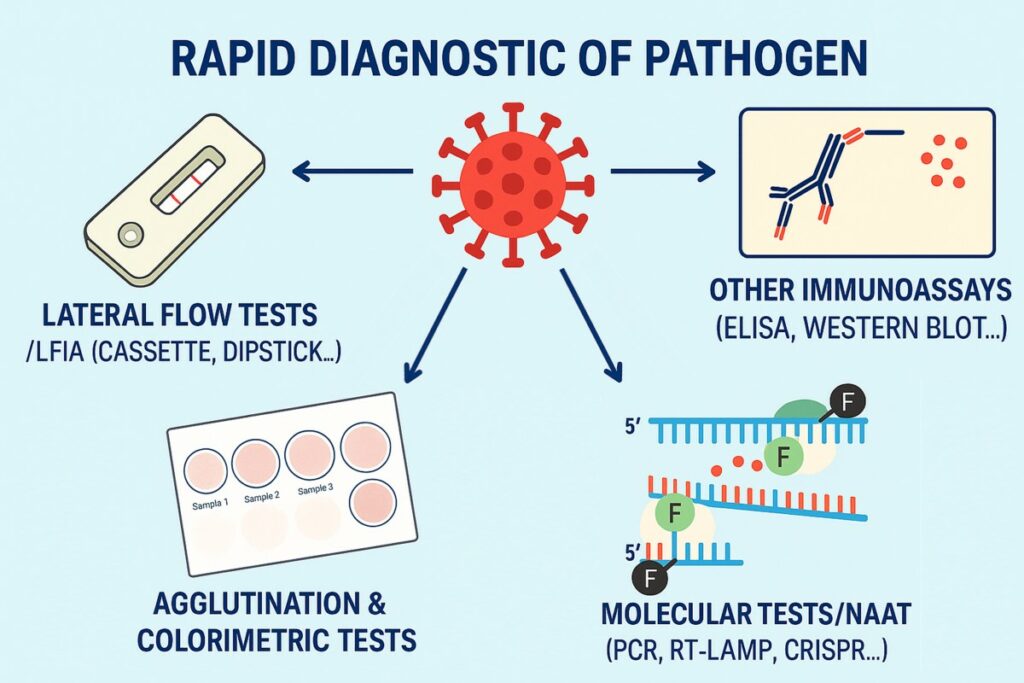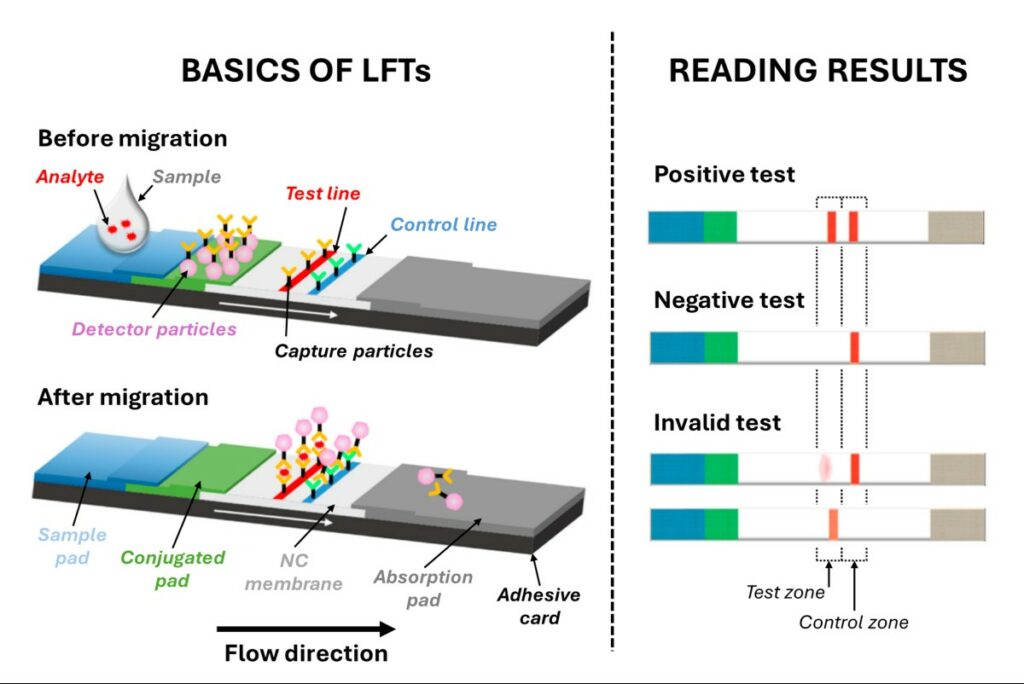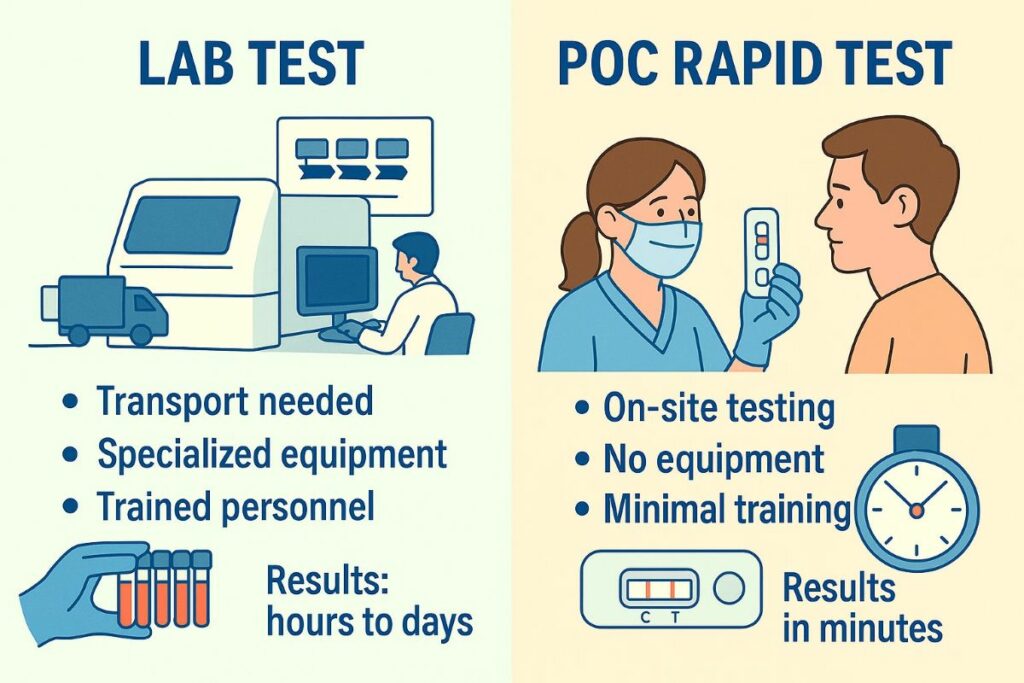Introduction
In modern healthcare, early and accurate diagnosis is essential for effective treatment and disease management. This is where Rapid Diagnostic Tests (RDTs) play a crucial role. Designed to provide quick results with minimal equipment, RDTs have transformed the landscape of Point-of-Care (POC) diagnostics, offering reliable solutions for infectious disease detection and other medical applications.
But what exactly is an RDT, and how does it work? In this article, we will explore the definition of Rapid Diagnostic Tests, their key technologies such as Lateral Flow Tests (LFTs), and their significance in healthcare.
What is a Rapid Diagnostic Test (RDT)?
A Rapid Diagnostic Test (RDT) is a fast, easy-to-use, and often portable diagnostic tool that delivers results within minutes. Unlike traditional laboratory tests that require specialized equipment and trained personnel, RDTs are designed to be used in Point-of-Care (POC) or Point-of-Need (PON) settings, allowing for immediate decision-making.
Examples of RDTs
RDTs cover a wide range of in-vitro diagnostic (IVD) applications, including:
- Lateral Flow Tests (LFTs): Used for detecting infections such as COVID-19, influenza, malaria, and HIV.
- ELISA Tests: Enzyme-linked immunosorbent assays, commonly used for detecting specific proteins or antibodies in biological samples.
- Molecular Tests (e.g., PCR, RT-LAMP, CRISPR): While typically requiring laboratory processing, some molecular RDTs can be performed at the POC level.
- Agglutination and Colorimetric Gel Tests: Used in blood typing and certain bacterial/viral infection diagnoses.

How do Rapid Diagnostic Tests work?
RDTs operate by detecting specific biomarkers,such as nucleic acids, proteins or metabolites, within a biological sample. These biomarkers can include molecular targets (e.g., viral RNA), epitopes on antigens or antibodies, chemical compound, ect. The presence of these biomarkers indicates the presence of a disease, infection, or other medical condition.
To ensure accuracy, two key factors are crucial in RDTs:
- Sensitivity: The ability of the test to correctly identify individuals with the target condition.
- Specificity: The ability of the test to correctly identify individuals without the condition, reducing false positives.
Different diagnostic technologies are used to detect these biomarkers, each with varying levels of sensitivity and specificity. Among them, Lateral Flow Tests (LFTs) are one of the most commonly used RDT formats.
Example: How a Lateral Flow Test (LFT) Works
One of the most common types of RDTs, Lateral Flow Tests (LFTs), operate based on immunochromatography. These tests work by detecting specific biomarkers (e.g., antigens or antibodies) in biological samples such as blood, saliva, or urine.
How an LFT Works:
- A sample is applied to a test strip containing binding sites specific to an analyte, such as an epitope on an antigen or an antibody.
- If the analyte is present, it binds to labeled detection molecules, forming a visible signal.
- Results appear as lines or color changes, indicating a positive or negative result.

The importance of RDTs in healthcare
The widespread adoption of Rapid Diagnostic Tests is driven by their ability to provide fast, reliable, and cost-effective results. Their importance extends across multiple areas:
- Early Detection of Infectious Diseases: RDTs enable rapid screening and containment of diseases such as COVID-19, malaria, HIV, or even non-infectious conditions like diabetes and pregnancy testing.
- Improved Accessibility: By reducing the need for specialized labs, RDTs make diagnostics available in remote or resource-limited settings.
- Point-of-Care (POC) Efficiency: Healthcare providers can make immediate treatment decisions, leading to better patient outcomes.
- Scalability and Mass Testing: During pandemics or outbreaks, easy-to-use RDTs allow for mass rapid screening programs.
- Diagnostic Innovation: Advancements in nanotechnology, AI, and biosensor technology continue to improve the performance and usability of RDTs.

Future of Rapid Diagnostic Tests
As biotechnology advances, RDTs are becoming more accurate, sensitive, and versatile. Innovations in nanotechnology, biosensors, and AI-driven diagnostics are paving the way for next-generation RDTs, making disease detection even faster and more reliable.
Conclusion
Rapid Diagnostic Tests (RDTs) are revolutionizing the way we detect and manage diseases. Their ability to deliver quick results at the Point-of-Care (POC) makes them an essential tool in modern healthcare. Among these, Lateral Flow Tests (LFTs) stand out as a key technology in the fight against infectious diseases.
As the demand for efficient and accessible diagnostics grows, innovations in IVD and Point-of-Need testing will continue to shape the future of medicine. Stay tuned for more insights into advanced diagnostic technologies and their role in transforming healthcare.
